|
National
Cash Register Company Main Page
The
National Cash Register
N-530 Bombe Enigma Decrypting Machine
(U.S. Navy Cryptanalytic Bombe)
Dayton, OH
This page added
12-29-2022.
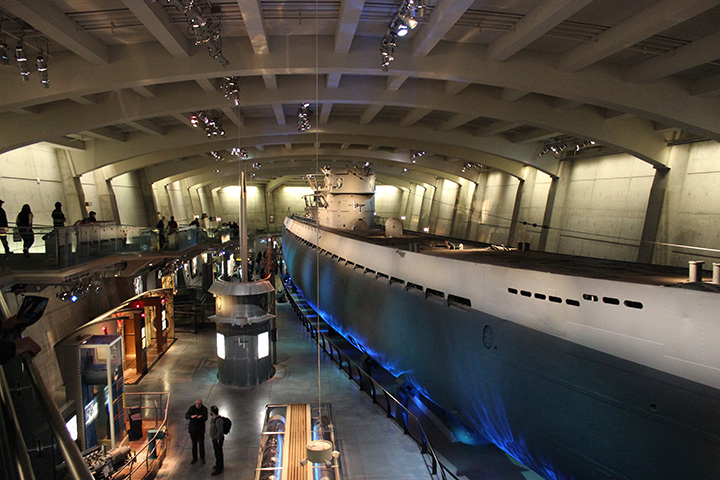
During World War Two, the German U-Boat was the
Royal Navy's and the U.S. Navy's "Public Enemy Number One."
Author's photo of U-505 at the Museum of Science and Industry in
Chicago, IL.
Encrypted messages were sent between German
Navy submarine headquarters and U-boats in the North Atlantic using the
German Navy's Enigma coding machine. The result was the massacre
of freighters and tankers bringing food, ammunition, weapons, and
everything else Great Britain needed to survive the German offensives
against its military forces throughout the world. Messages
could be decrypted by hand in some cases, but by the time they were, it was
too late. Ships had already been sunk by submarines after
being given the location of the slow convoys making their way across the
Atlantic. Something faster was required. The solution was
the National Cash Register N-530 Bombe Enigma Decrypting Machine.
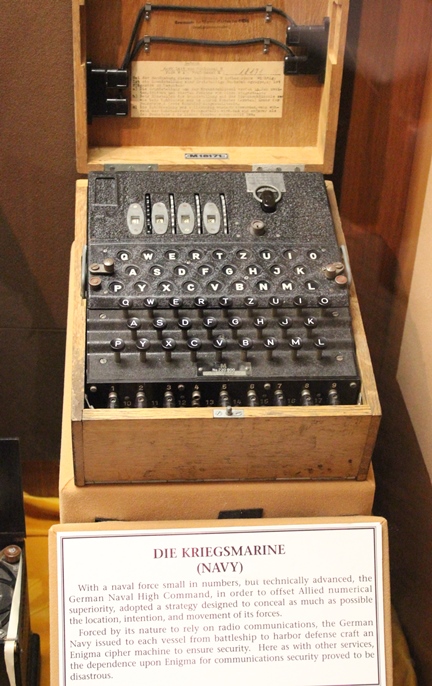
During World War Two, this German Navy
Enigma coding machine was "Public Enemy Number Two" to the
Royal Navy and the U.S. Navy. All photos on this page, unless otherwise
stated, were taken by the author at the National Cryptologic Museum in
May 2016.
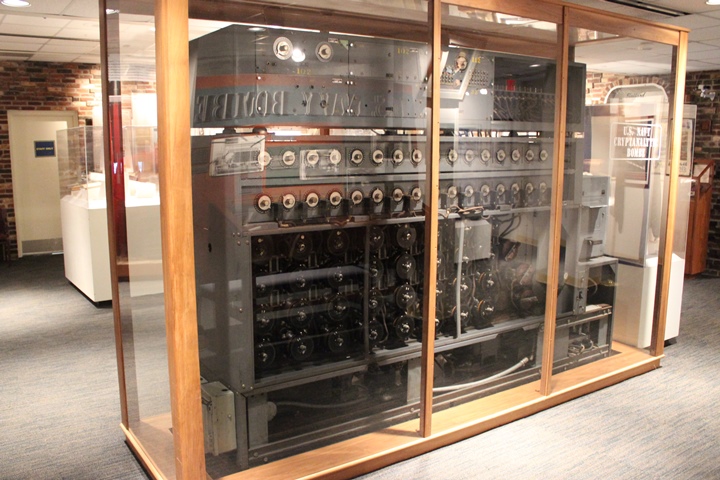
The National Cash Register bombe was based
on a similar machine invented by Polish Intelligence previous to the
German invasion in 1940. It was further improved by Alan Turing at
Bletchley Park in England where German messages were decrypted.
However, the U.S. Navy wanted its own bombes and National Cash Register
was contracted to make these under a very top secret project. The
bombe shown here is the only surviving one left of the 121 built.
It was one of only two American top secret projects during World War Two to remain
a secret. The other was the VT Proximity Fuze. The Manhattan
Project had several Russian spies in it.
There is a plethora of written literature and
websites that detail the entire battle to decode German and other Axis
secret codes and how the bombe came to be to assist in winning the
war. This page will not delve into that, as it is well documented
on other places.
This page will examine the last surviving
National Cash Register N-530 Bombe Enigma Decrypting Machine that is on
display at the National
Cryptologic Museum at Fort Meade, MD.
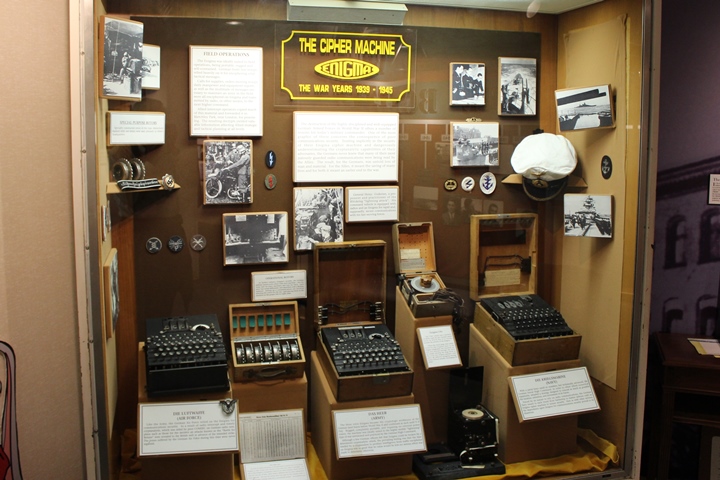
The Museum had this display of several types
of Enigma machines in 2016.
The following series of photos will include
both photos taken with and without flash. Those without flash will
have reflections as the entire bombe is enclosed in a glass case.
It is the nature of the beast.
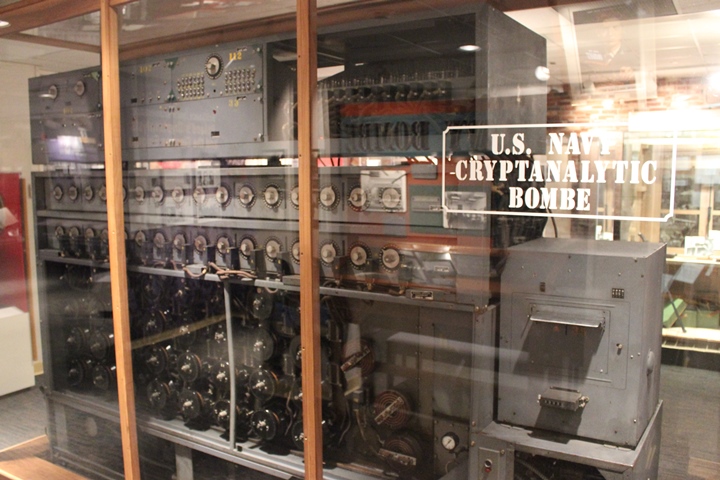
The Museum identifies the bombe as the U.S.
Navy Cryptanalytic Bombe.
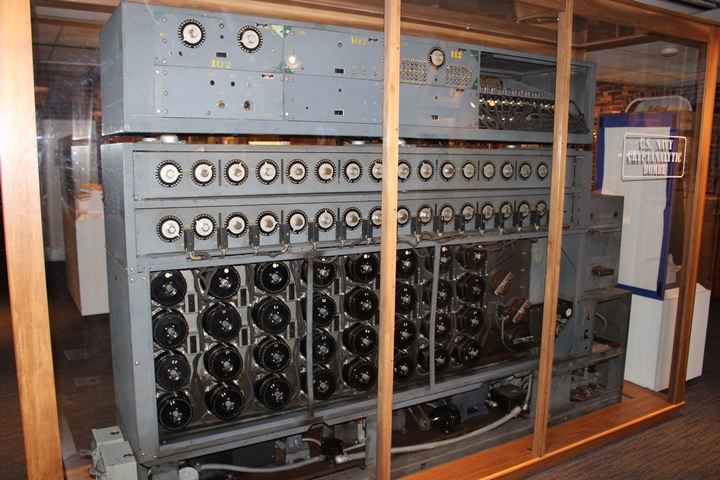
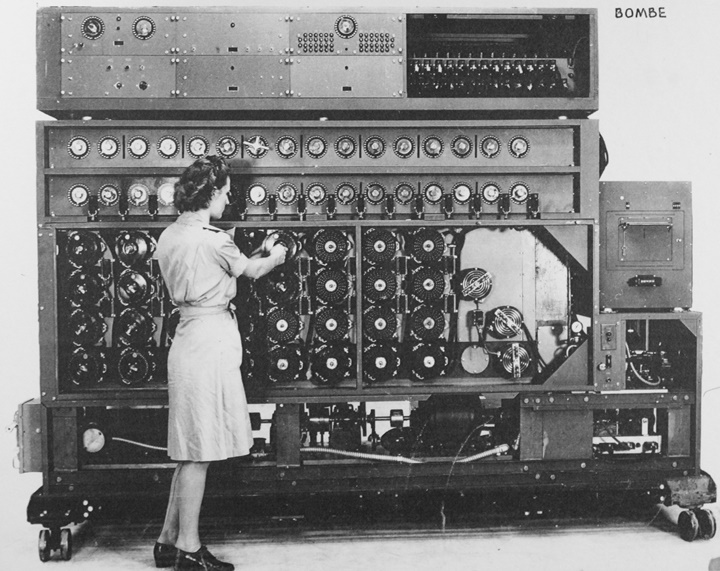
This shows the size and complexity of the
N-530. It was seven feet in height, ten feet long, and weighed
5,000 pounds.
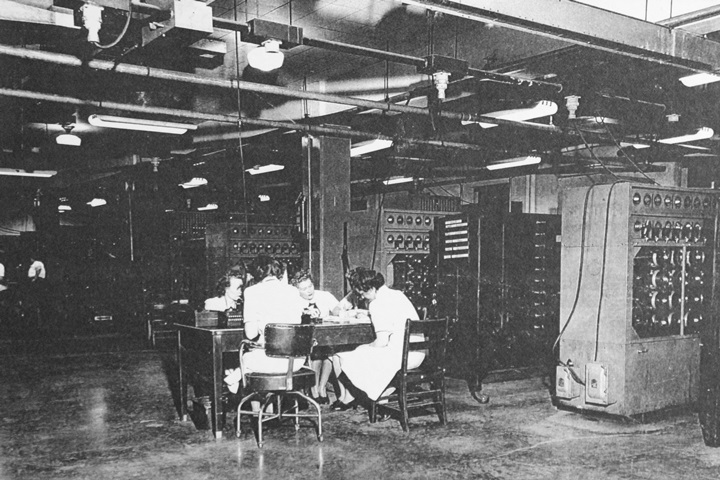
This photo shows several NCR-530s in
operation in Washington, DC.
Next will be a series of photos that explain
the different parts of the N-530 Bombe.
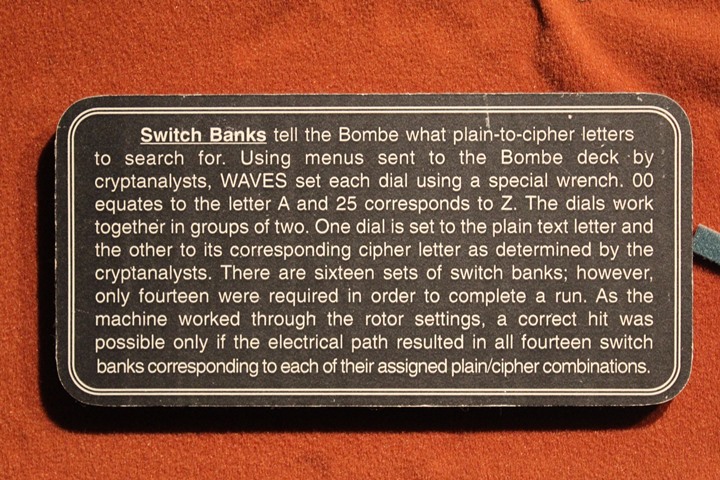
The next two photos show the switch banks on
the N-530.
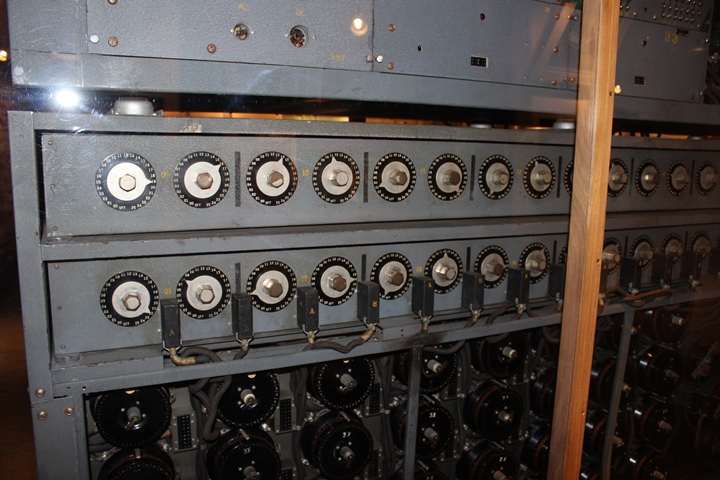
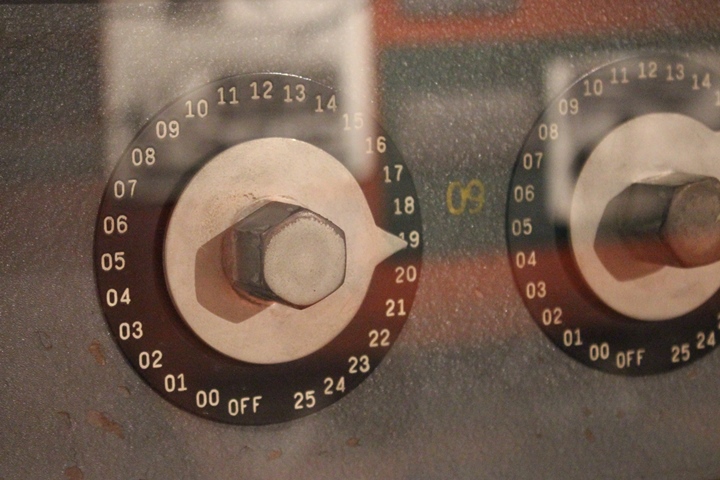
This shows the nuts that required a special
wrench.
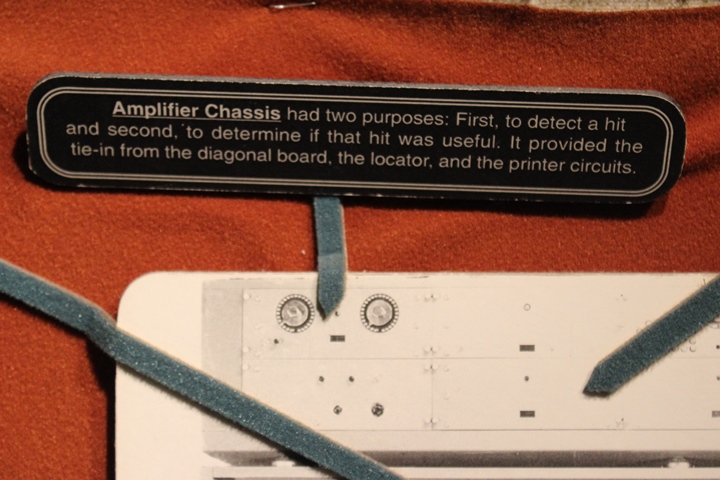
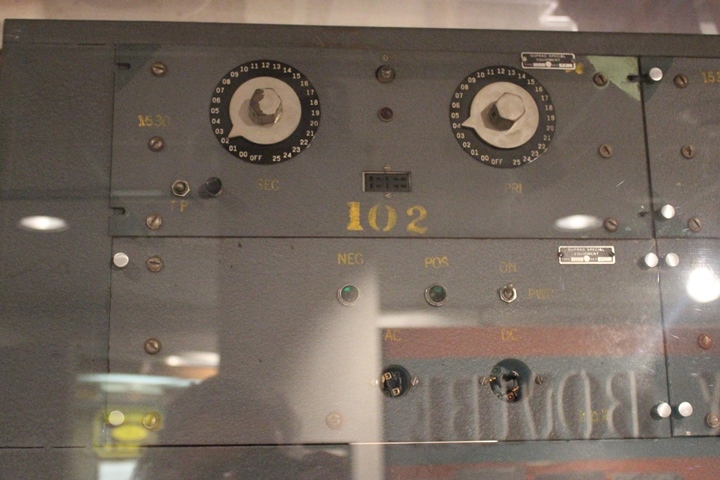
The amplifier chassis on this machine is marked 102. The two switches also needed a special wrench to set
it. The WAVES may have needed to stand on a stool to set these two
switches, as the machine was seven feet in height.
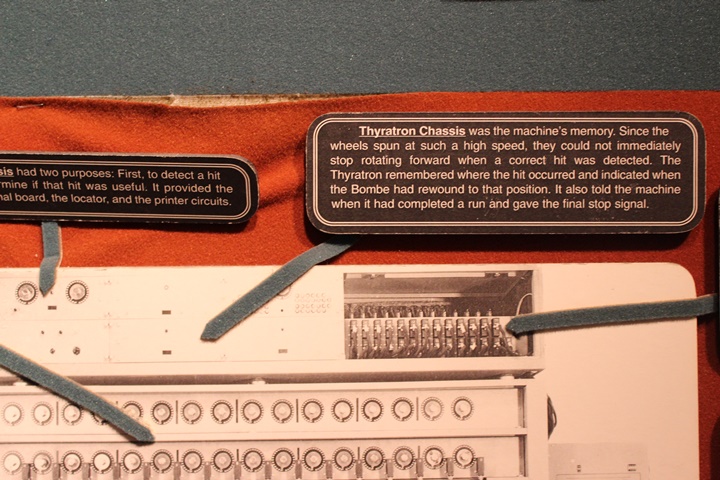
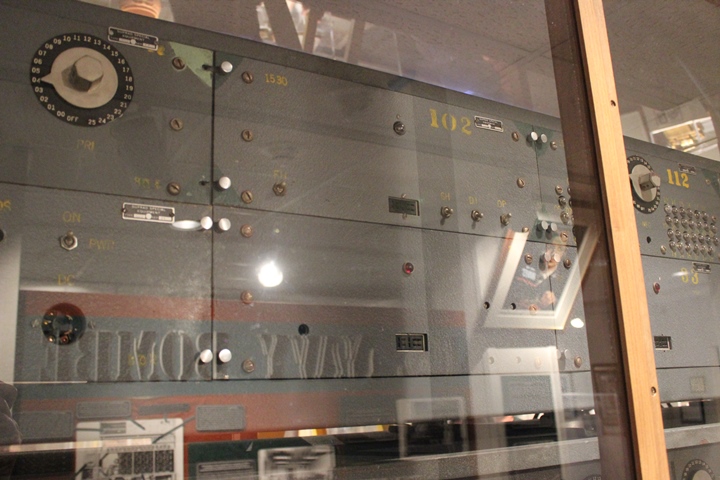
The Thyratron chassis is the bottom chassis
to the left of the wood glass support.
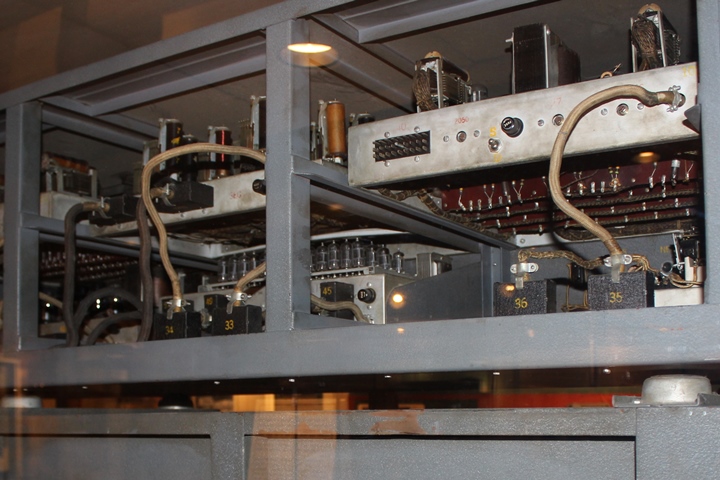
This is the back side of the N-530.
The amplifier chassis is on the right, with the Thyratron chassis
located at bottom left. It is the one with all of the tubes in it.
These were the Bombe's memory.
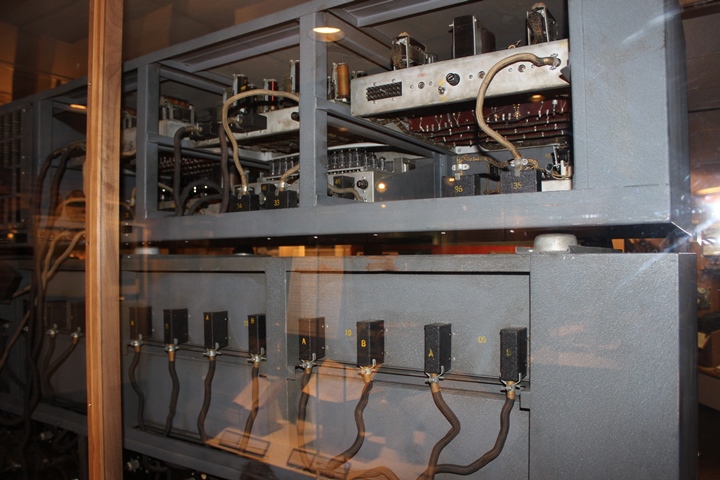
This shows more of the back side of the
bombe.
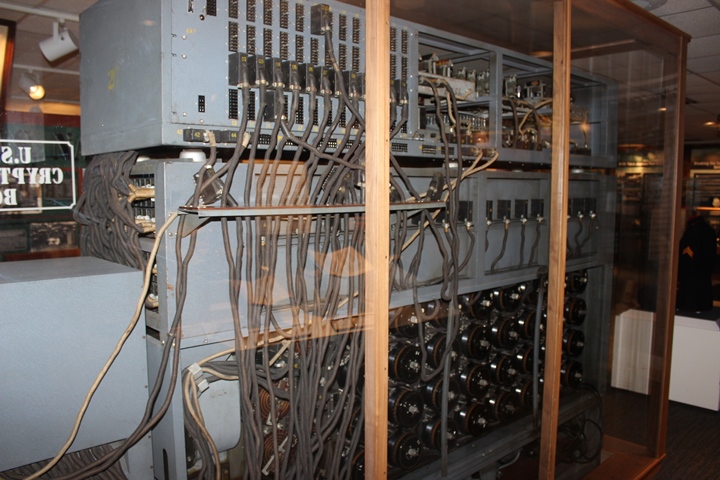
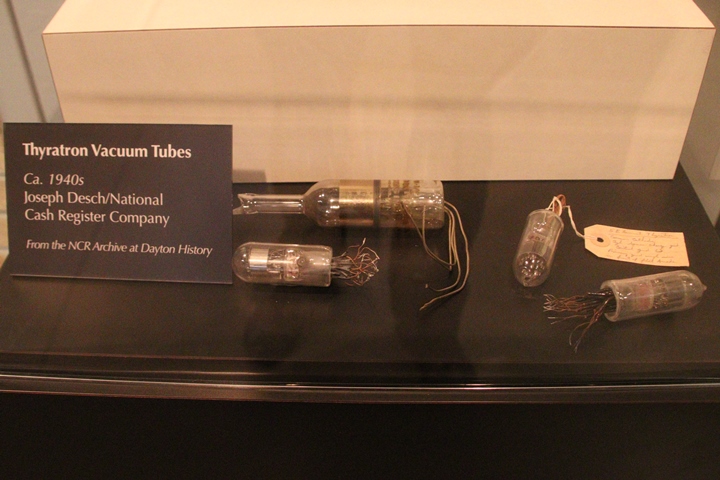
These Thyratron tubes are on display at
Dayton History at Carillon Park in Dayton, OH. Author's photo.
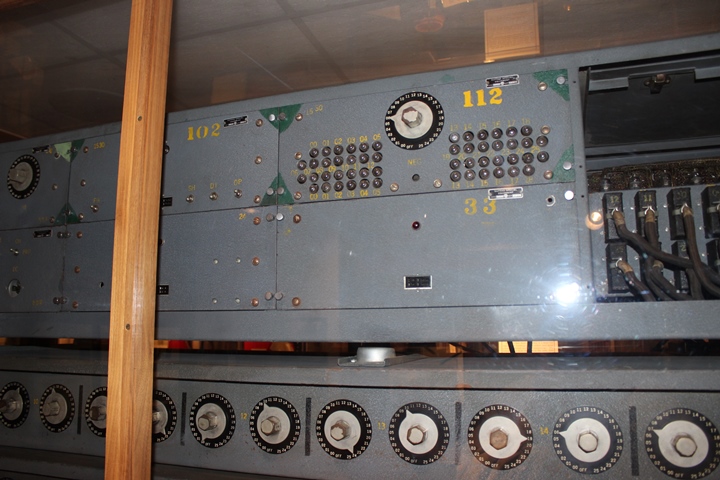
The chassis with all of the lights and one
switch was not identified as to its function.
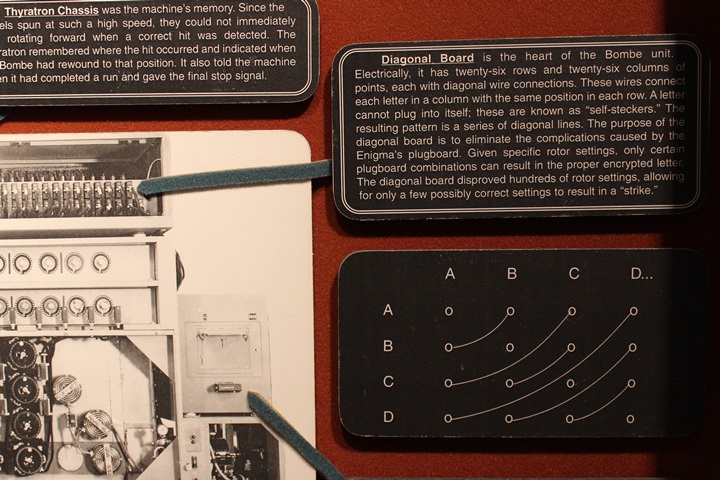
This describes the function of the Diagonal
Board.
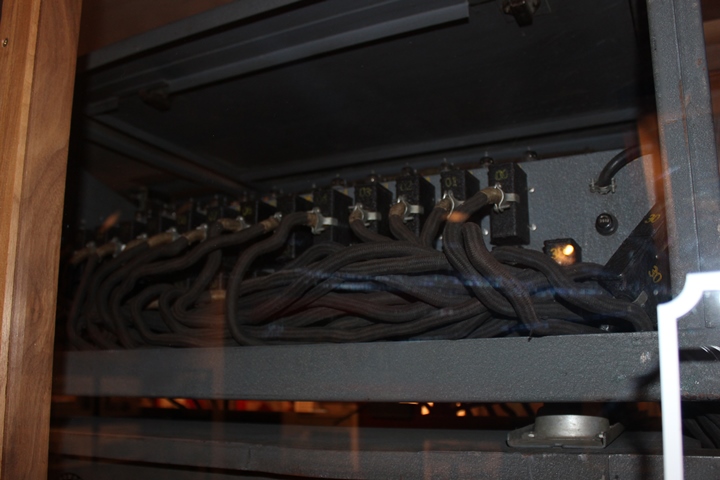
This shows the cables and plugs of the
Diagonal Board.
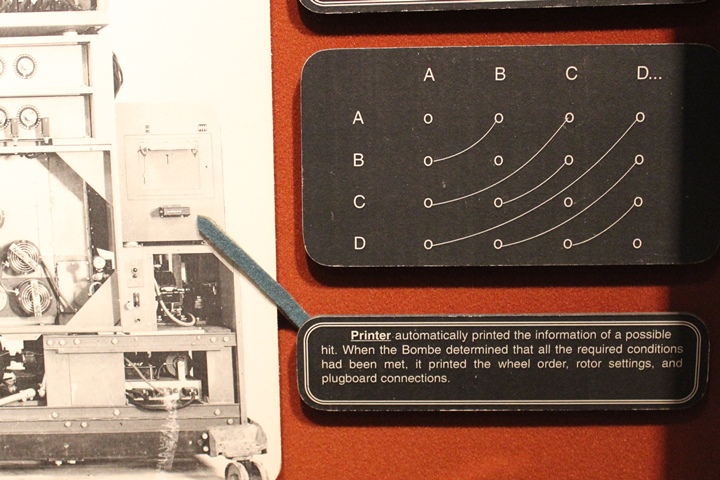
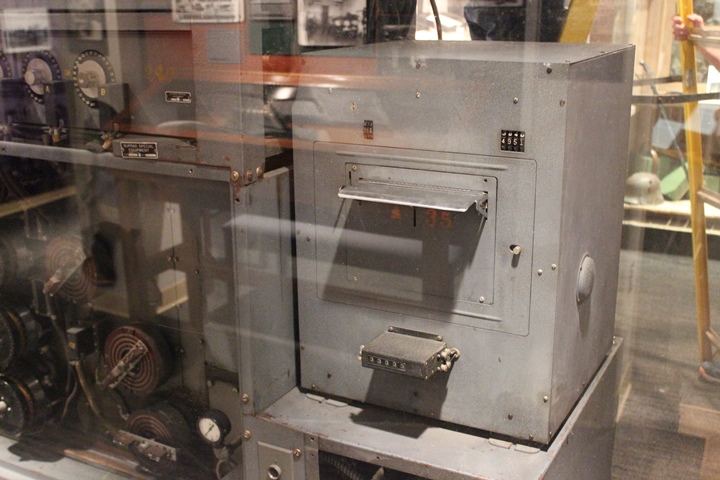
The printer.
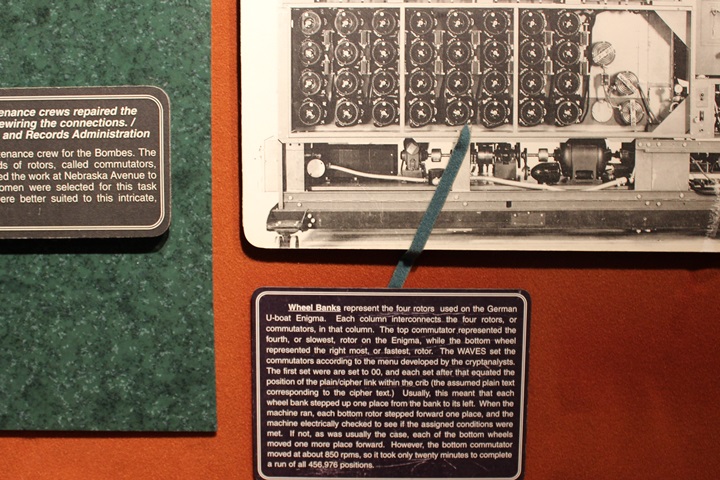
An enlarged explanation is below.
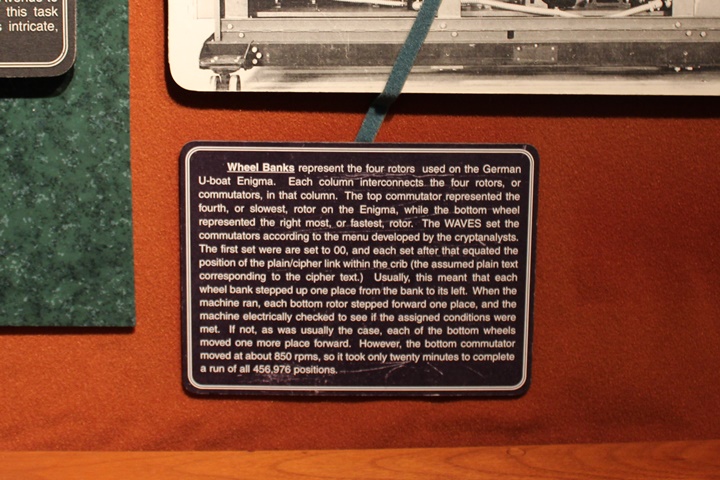
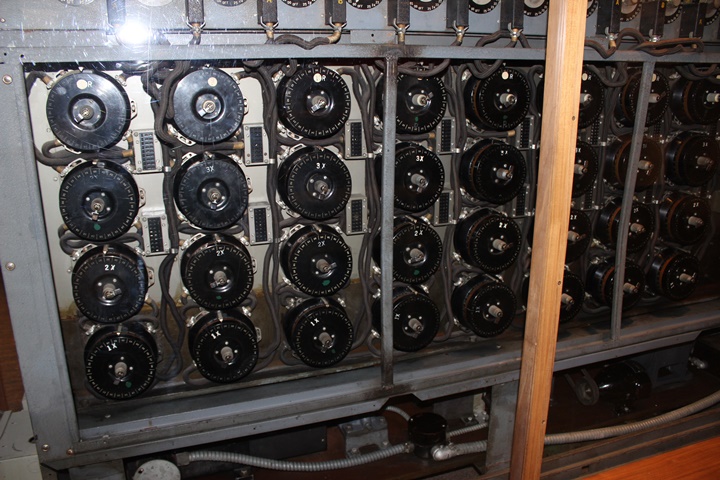
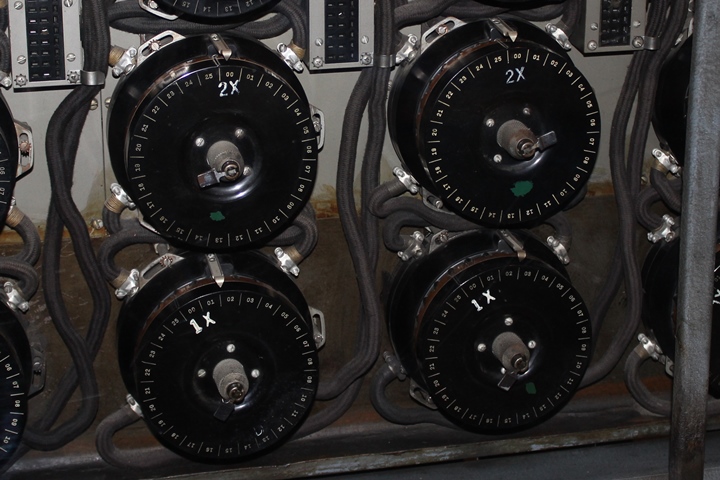
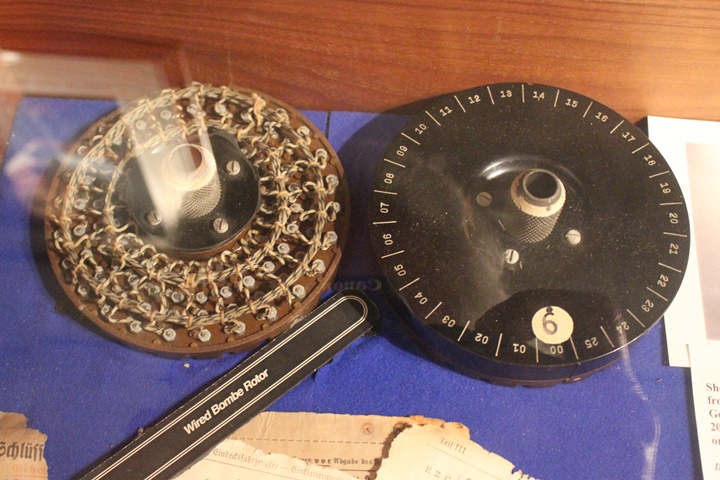
This shows the wiring in the rotor.
The wiring replicates the wiring in the Enigma rotors.
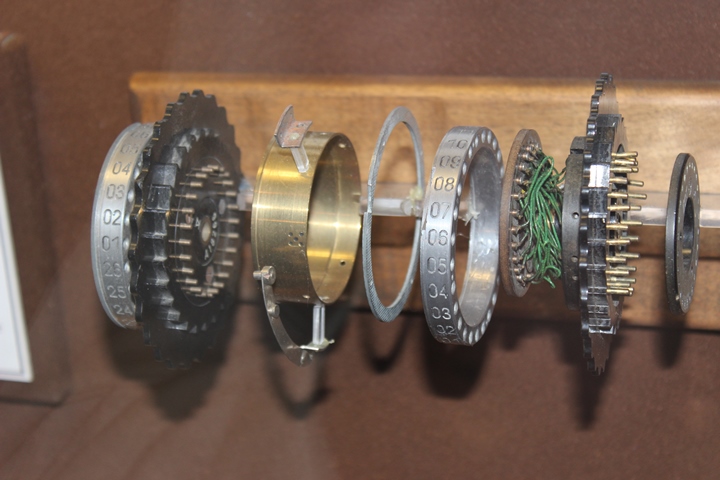
A rotor from an Enigma machine.
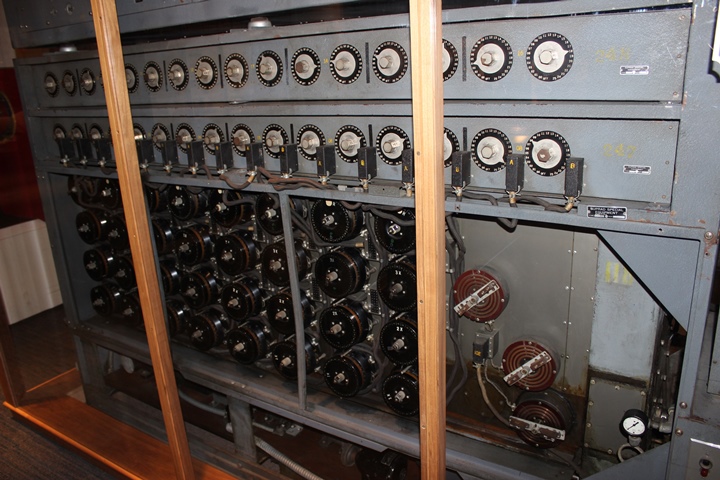
In the lower right portion of the Bombe are
three different rotors of a different type. These were test
rotors.
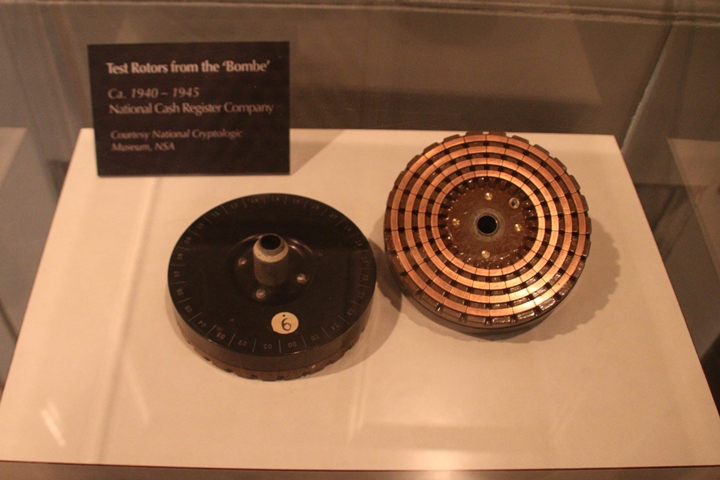
These test rotors are on display at Dayton
History at Carillon Park in Dayton, OH. Author's photo.
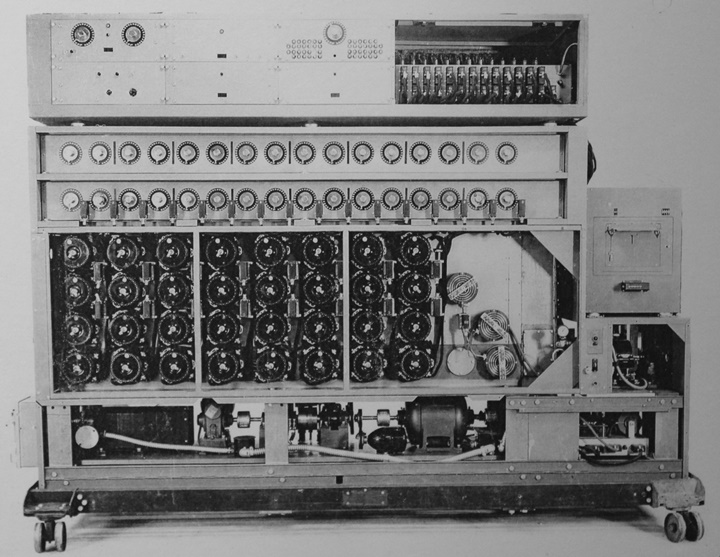
This photo shows the underside of the N-530
with the drive motor to spin the wheel banks. The next series of
photos show the bottom in more detail.
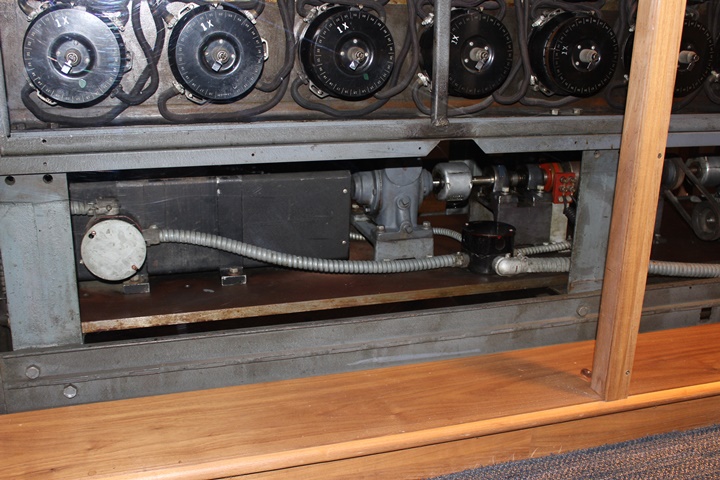
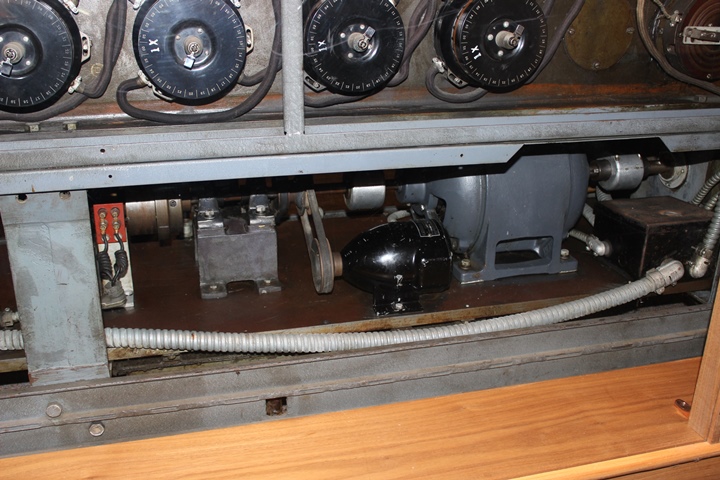
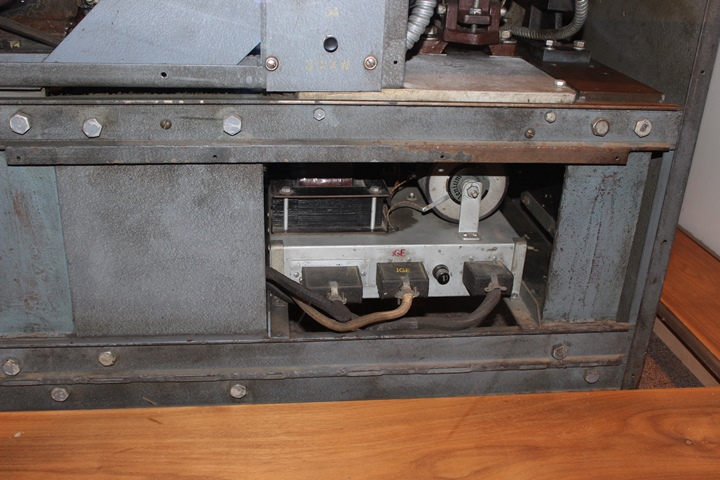
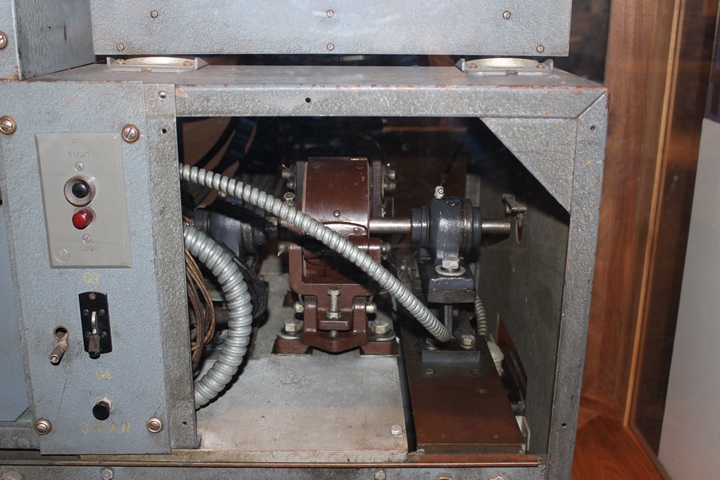
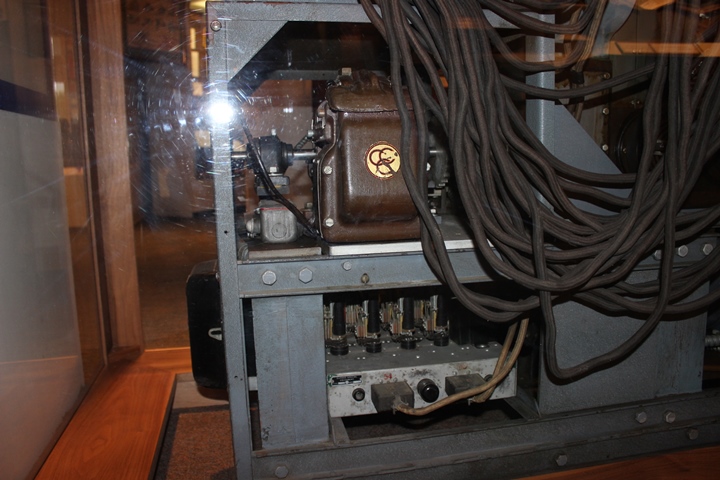
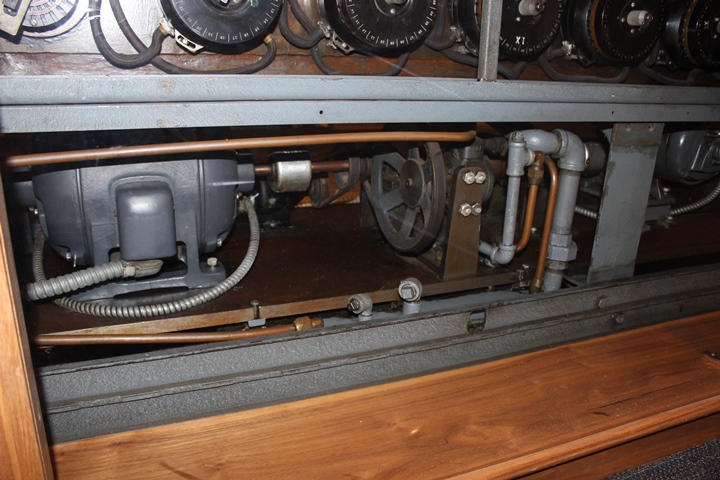
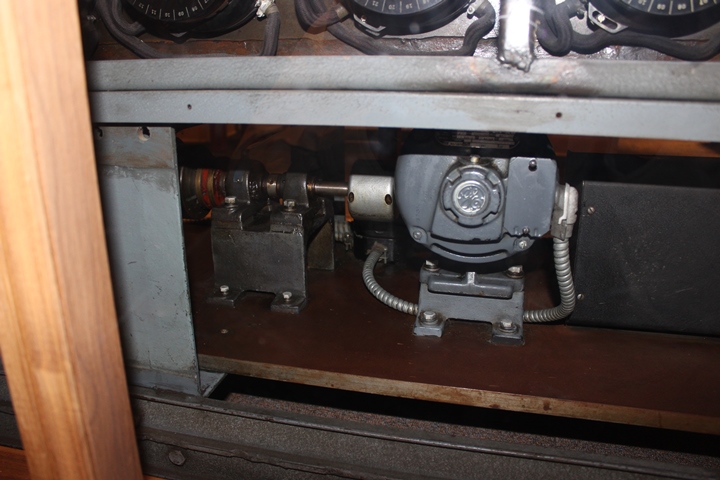
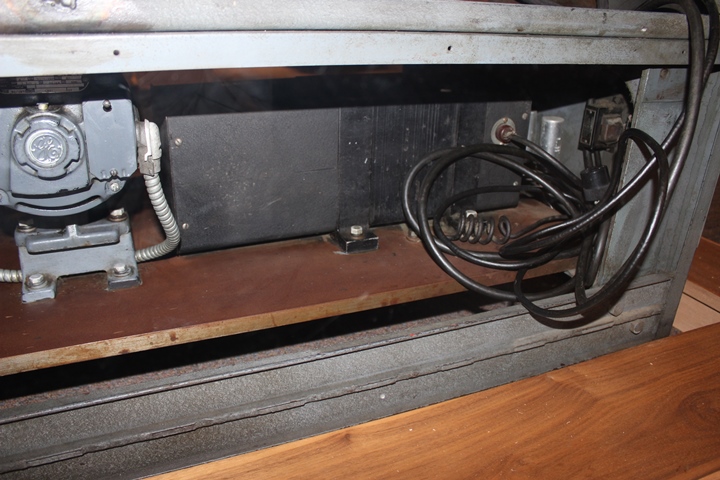
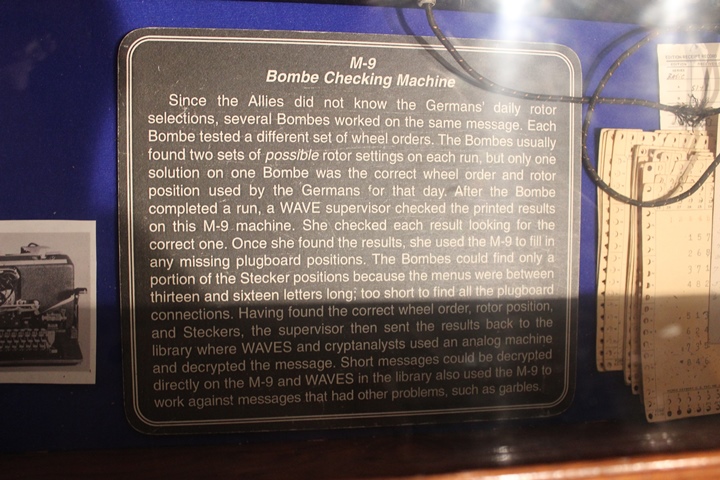
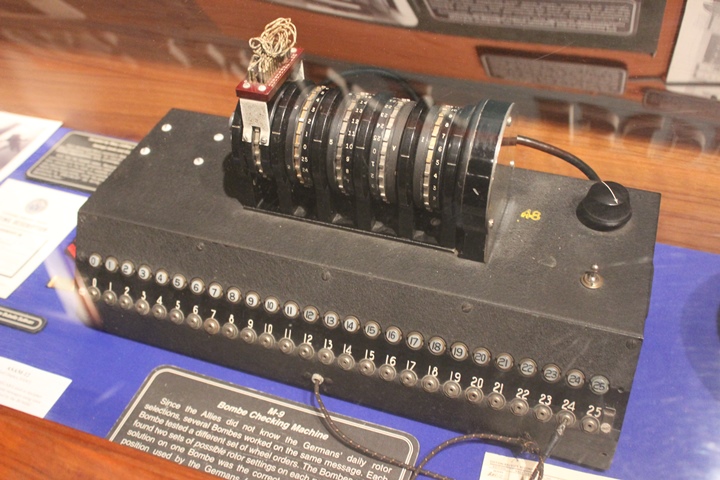
National Cash Register Main Page |










































